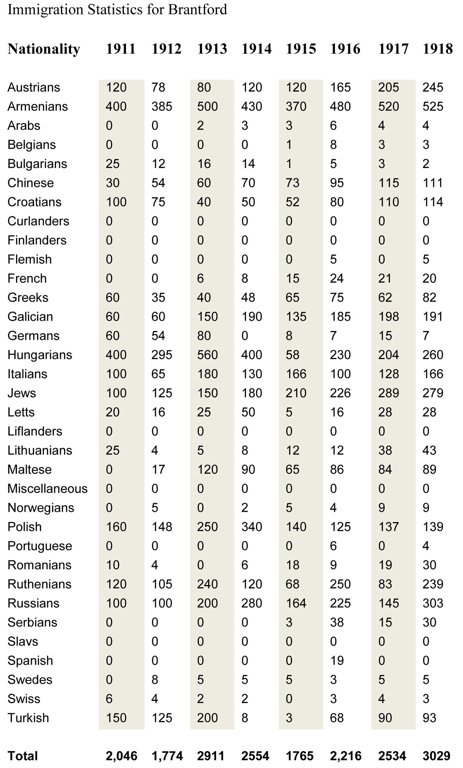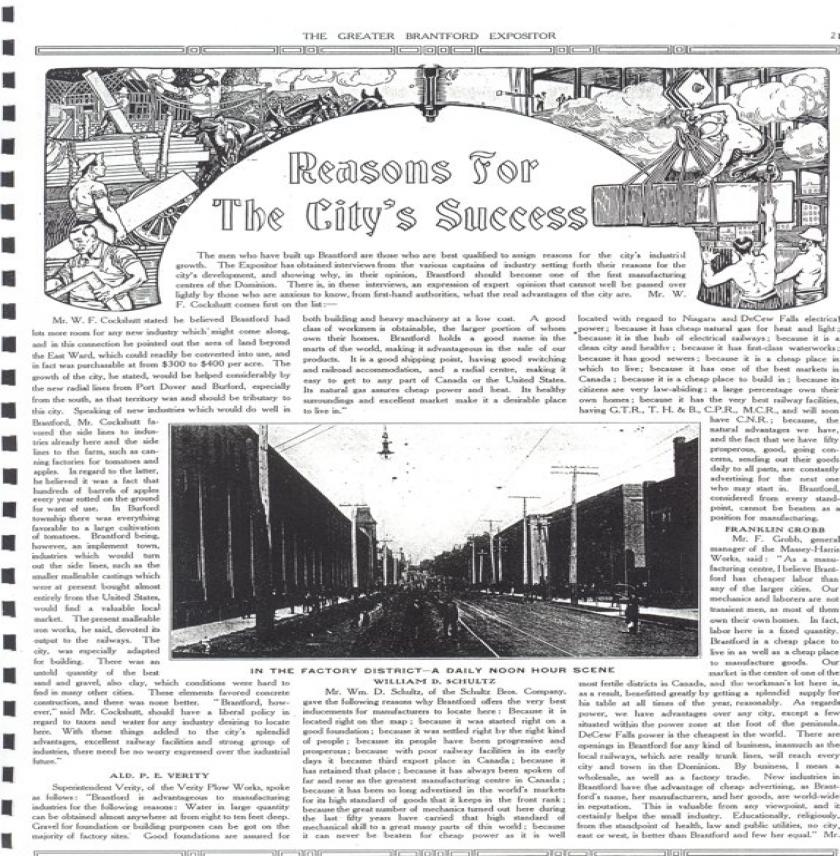Pre-WWI Snapshot
 The city of Brantford has long been a multi-cultural community and in the years prior to the beginning of the First World War, the community, with a population of just over 26,600, was the new home of just over 2,000 people from 19 different countries.[1]
The city of Brantford has long been a multi-cultural community and in the years prior to the beginning of the First World War, the community, with a population of just over 26,600, was the new home of just over 2,000 people from 19 different countries.[1]
In 1911, the Armenian and Hungarian communities, with a population of about 400 people each, were the two largest groups of immigrants in the city.[2] Although the population of both communities dropped in 1912, their numbers had rebounded by 1913, when there were 560 Hungarians and 500 Armenians. Brantford was home to a significant Polish community of 160 people and there were also populations of Austrians and Ruthenians (a Slavic people from what is now known as the Ukraine).[3] Other immigrant populations in Brantford in 1911 included Italian, Jewish, Croatian, Bulgarian, Chinese, Greek, Galician, German, Lithuanian, Romanian and Swiss.
By the end of the First World War in 1918, there were just over 3,000 immigrants from 34 different countries living in Brantford.[4]
Industry
Prior to the start of the First World War, Brantford was an industrial hub boasting 76 factories employing more than 9,115 people. A significant number of those people were employed in the agricultural implements industry, with 1,200 employed by Massey-Harris Co., 850 employed by Cockshutt Plow Co. and a further 550 employed by Waterous Engine Works Co. and 450 employed by Verity Plow Co. Other large employers included Pratt and Letchworth Co., with 600 employees and P.H. Secord and Sons employing 500.[5]
The agricultural implement industry was the major industry in Brantford-Brant County and was a huge part of Canada's agricultural implement manufacturing sector producing just over one-quarter (26.8%) or $12,164,465 of the country's $45.2 million output.[6]
